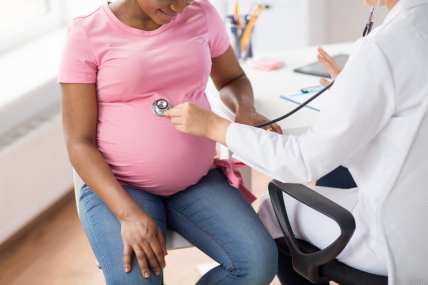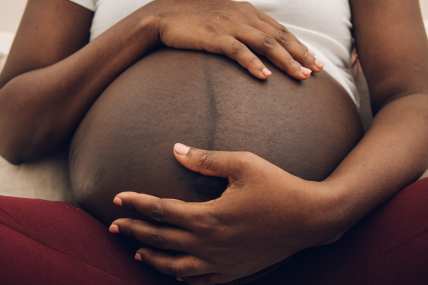Report: Black women at the highest risk from pregnancy lack the help they need
A stress-free delivery may be more challenging for pregnant Black women. A program to aid rural women isn't reaching such areas in the Southeast with majority Black populations.
A healthy and stress-free infant delivery may be more challenging for Black women, who face the highest risk from pregnancy since they lack the necessary resources.
KFF Health News reported that a grant-funded program to enhance maternity care in rural areas has failed to reach Black mothers, who are most at risk for pregnancy-related problems and death. The Rural Maternity and Obstetrics Management Strategies Program — or RMOMS, launched by the Health Resources and Services Administration — has operated for four years and allocated nearly $32 million to provide access and care for thousands of mothers and babies nationwide.
The Southeast has the highest proportion of rural towns with a majority of Black residents, according to the U.S. Census Bureau, yet RMOMS is not connecting with women in that region, according to KFF Health News. Non-Hispanic Black women die at a rate that is over three times higher than that of non-Hispanic white women, regardless of their level of education or income.

The lack of Medicaid expansion in the Southeast is “all the more reason funding should be going to these areas,” said the National WIC Association’s chief executive, Jamila Taylor.
“The South is a hotbed — to be quite honest — of a whole host of chronic diseases and health challenges,” Taylor added, KFF reported, “particularly for people of color.”
Black women in rural locations also have a higher risk of dying or having more severe health issues during delivery than white women, according to a 2021 analysis of federal data.
RMOMS was established in 2019 and has provided 10 maternal health grants nationwide to advance telehealth and build networks between hospitals and clinics. The program noted that its initial grant recipients assisted more than 5,000 women in receiving medical treatment and reported a decline in premature deliveries during the second year of implementation.
Peiyin Hung, deputy director of the Rural and Minority Health Research Center at the University of South Carolina, said many people “don’t have sufficient resources” to submit funding applications for the program.
“RMOMS really means to invest in the most underserved and most disadvantaged communities,” said Hung, who also is part of the health equity advisory group for the maternal grant program. However, because the program requires applicants to establish a network of hospitals and other care providers, “the odds are not there for them to even try.”
Hung argued in support of basing awards on need rather than just the application.
Maternal funds have been given to Arkansas, Maine, Minnesota, New Mexico, South Dakota, Texas, Utah and West Virginia medical facilities. There have also been two awards given in Missouri.
Texas indicates that among the inaugural 2019 grantees, 91 percent of those it serviced were Hispanic; New Mexico reported 59 percent of recipients were Hispanic, and the Missouri project noted 22 percent of beneficiaries were Black patients. In every instance, Medicaid beneficiaries predominated.
Taylor said grant applications are frequently time-consuming and labor-intensive and demand extensive data collection, adding to the “real challenges and barriers in the process of applying for the grants in the first place.”
According to several current award recipients, the federal agency offers significant technical help and is quick to address inquiries and concerns. However, they also noted how challenging it was to be selected for the funds, which totaled $1 million or less for last year’s recipients.
Obstetrician and gynecologist Johnna Nynas wrote the maternal grant proposal for Sanford Bemidji Medical Center in Minnesota, describing it as “an intimidating grant to apply for.” She added that she dedicated much personal time to writing it.
Nynas noted that four hospitals in the rural area of northern Minnesota had shuttered their labor and delivery sections in recent years. As a result, patients, including many Indigenous women, must travel at least 60 miles one way to receive care.
Health Resources and Services Administration spokesperson Elana Ross noted the need to work with Medicaid “increases the likelihood that the pool of applicants if selected, will be able to sustain services at the end of federal funding.” She pointed out that Medicaid covers nearly half of all births nationwide and a higher percentage of births in rural regions.
According to the agency’s operating plan, the initial budget for the rural maternity program in fiscal year 2023 was $8 million, down from $10.4 million in fiscal year 2018. After the government organization discovered an additional $2.4 million in its internal budget, grants were released in May. Just two will be awarded this year, and applications for them are due for submission by July 7.
HRSA officials added that the purpose of the RMOMS grants is to enable recipients to continue their programs even after the federal money for many years expires.
“Money matters, resources matter,” Rep. Robin Kelly, D-Ill., a member of the maternity care caucus in Congress, said of the shortage of funds in the rural South.
TheGrio is FREE on your TV via Apple TV, Amazon Fire, Roku and Android TV. Also, please download theGrio mobile apps today!



